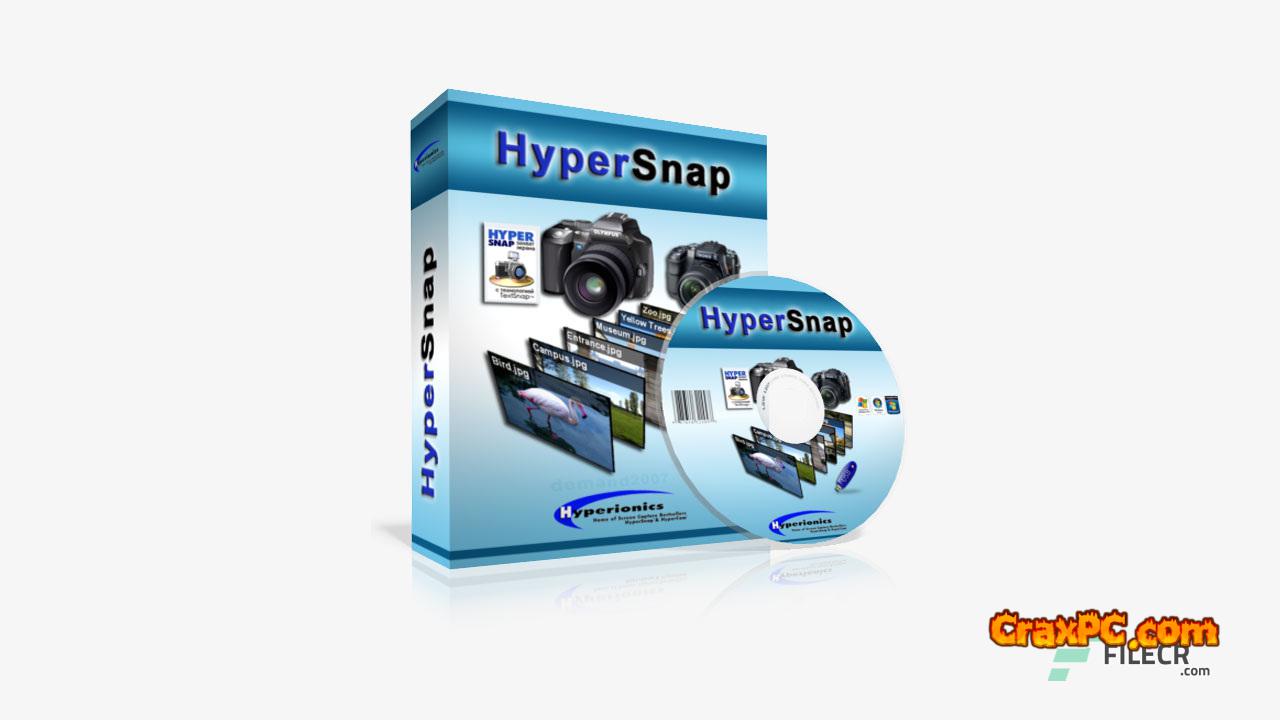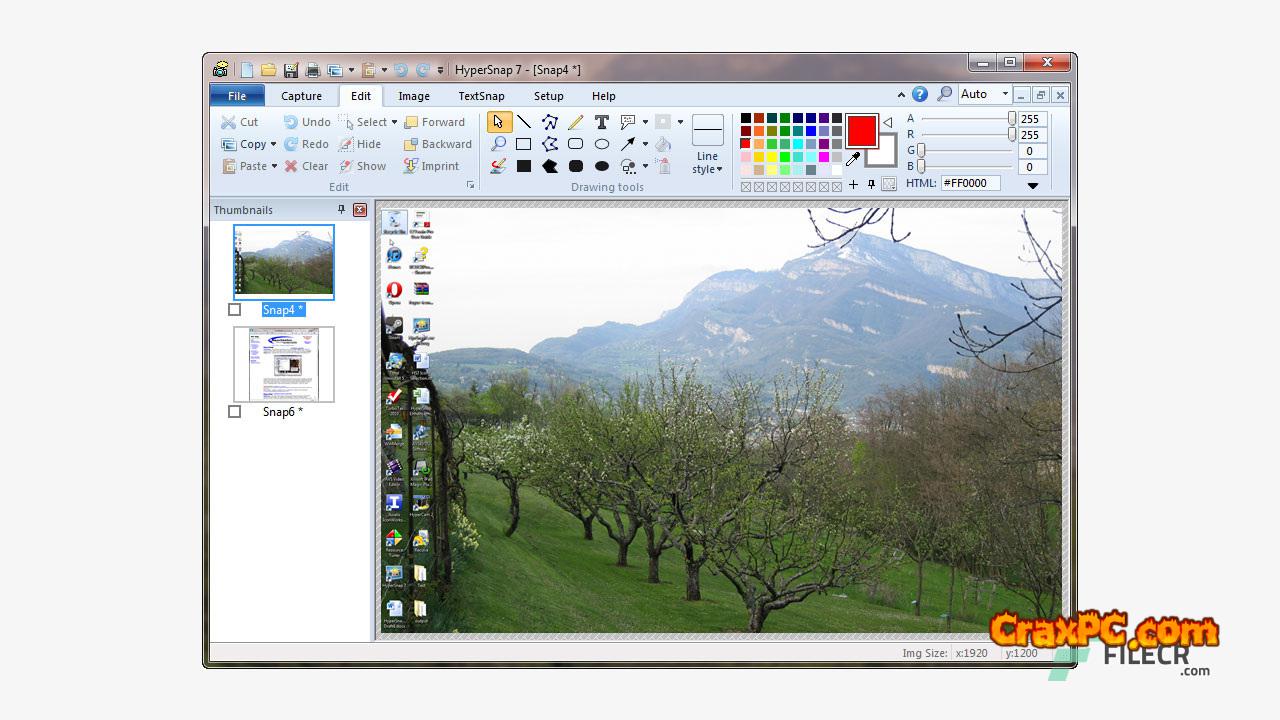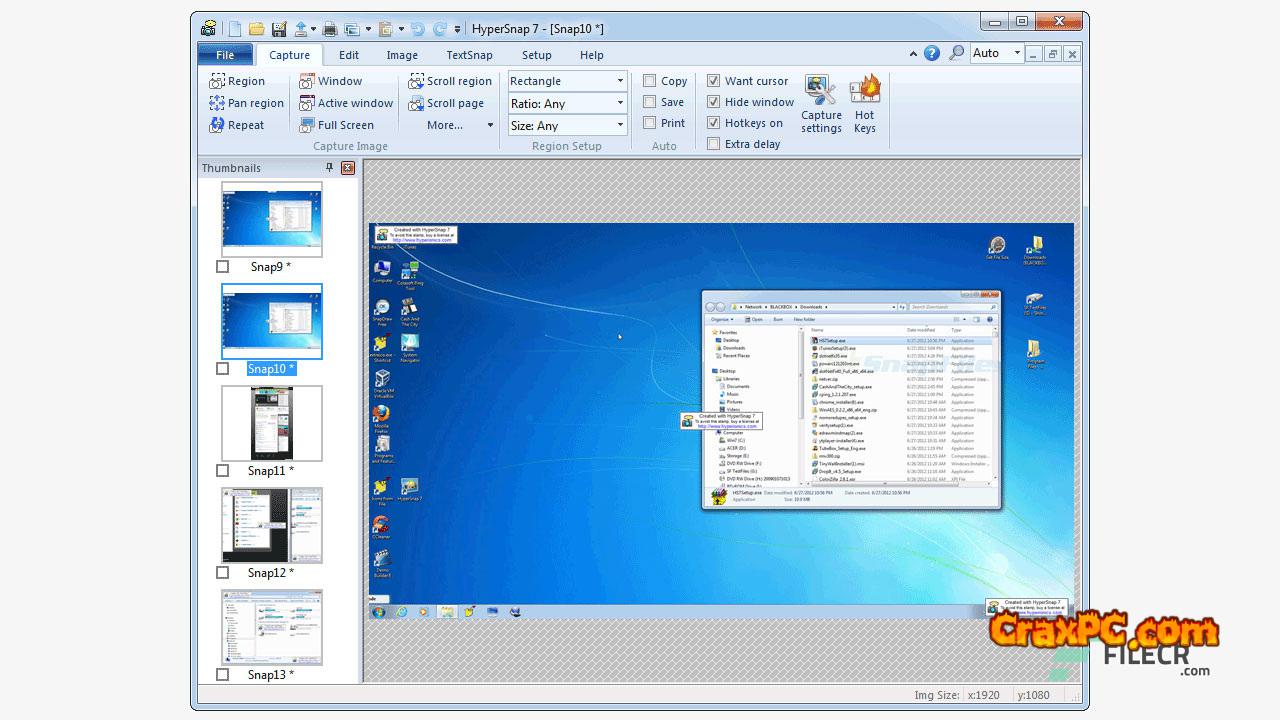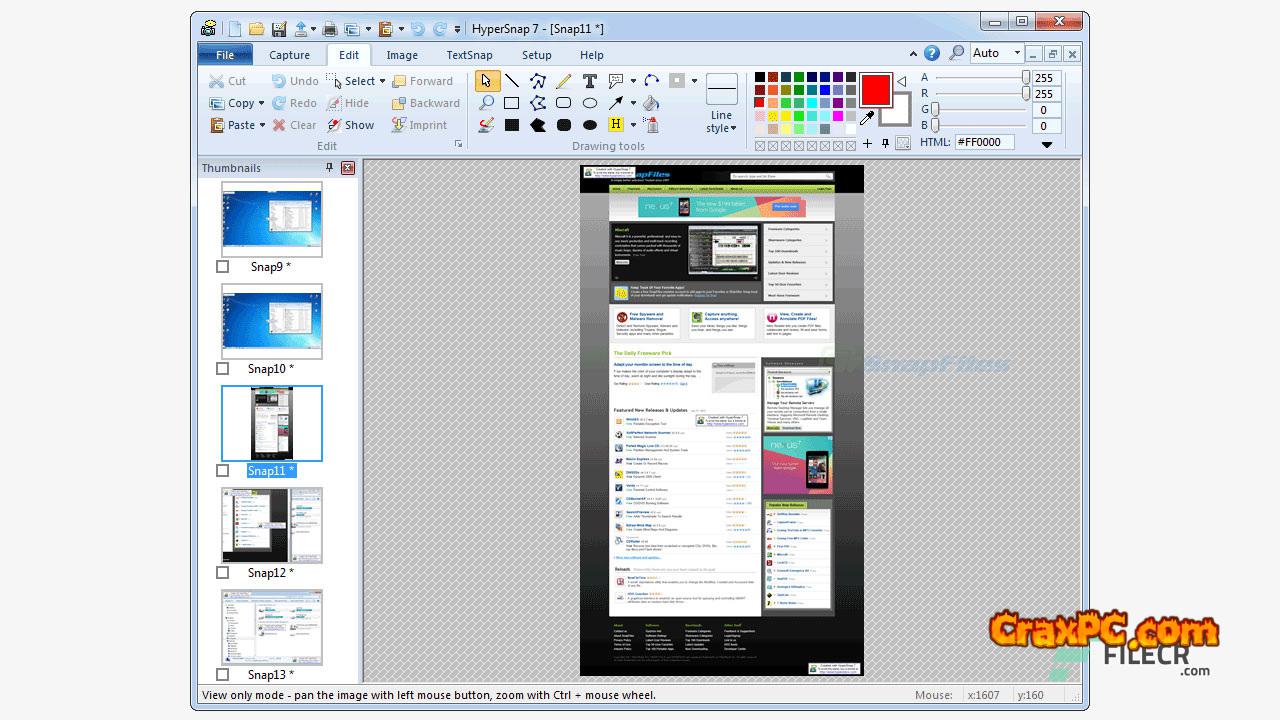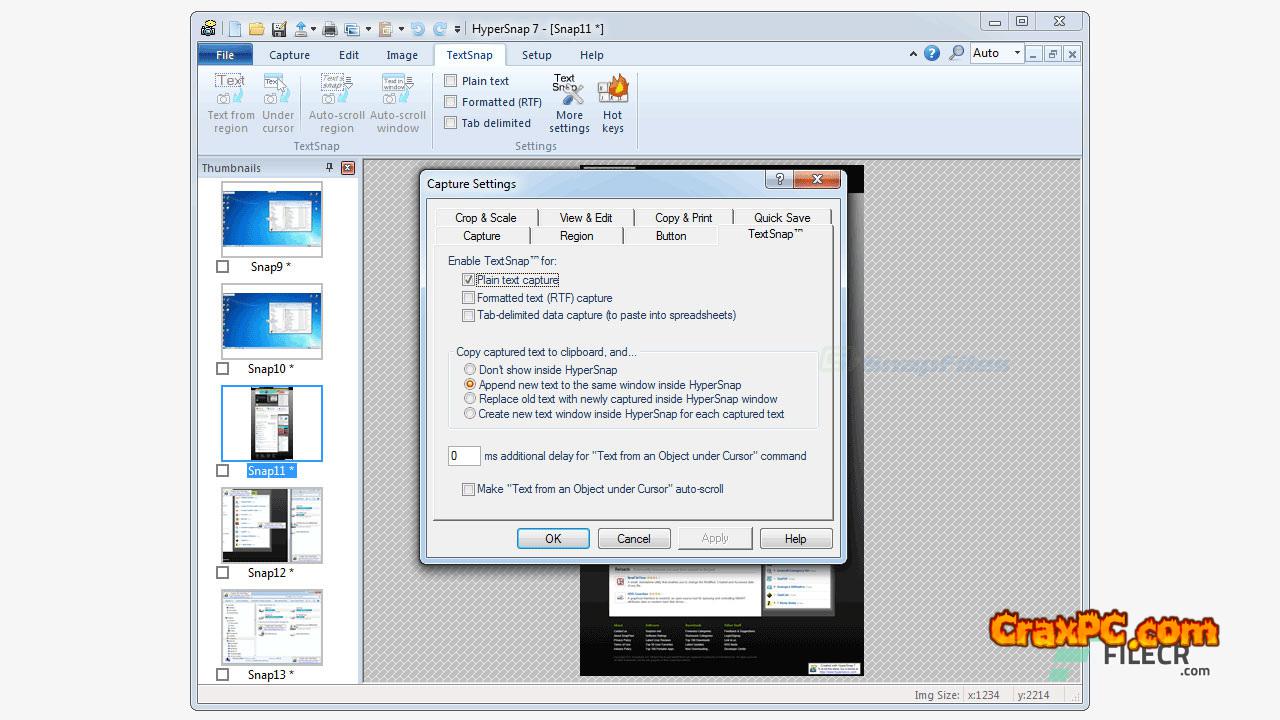Download the complete version of HyperSnap for Windows for free. It provides the quickest and most convenient method for capturing screen shots from Windows displays, full-screen games, and text from locations where standard text copying is not feasible.
A Synopsis of HyperSnap
Utilize it to capture images intended for incorporation into various formats such as marketing materials, online tutorials, manuals, presentations, and emails, in addition to your help system. Rapidly share a picture-perfect representation of any element on your screen by utilizing HyperSnap.
This robust screen capture tool is highly adaptable and remarkably user-friendly. Alternatives to the modern “ribbon” interface depicted in the preceding image include the conventional menu and toolbars.
32-bit and 64-bit versions of Windows 10, 8 (desktop mode), 7, Vista, and their respective Windows Server editions are supported by HyperSnap 8. When operating Windows XP, utilize HyperSnap.
Aspects of HyperSnap
The image is captured from any location on the display.
Innovative and potent tools for image manipulation, altering, annotation, and capture.
Unrestricted undo and restore.
Almost anywhere on the screen, modifiable text can be captured using the TextSnap function.
Lists and navigation menus can be captured using a delayed capture or a shortcut.
In addition to frame creation, drop shadows, image signatures, and FTP server uploads.
Automatic substitution of colors.
Capturing non-rectangular windows.
Ideal for technical authors in the professional world who must document and photograph dozens of buttons.
Automatically scrolls and captures lengthy web pages and others at once.
Captures are saved automatically as graphics files.
Functions as an impressive format converter and image viewer.
An entirely modifiable user interface.
By utilizing the Extended Window Capture function, a window is resized to a significantly larger dimension.
System Specifications and Technical Requirements
Any computer operating 32-bit or later versions of Windows Vista, Windows 7, Windows 8, or Windows Server 2008 (including R2). The program implementation requires 100 MB of available disk space; approximately 25 MB remains after the installation is complete.

